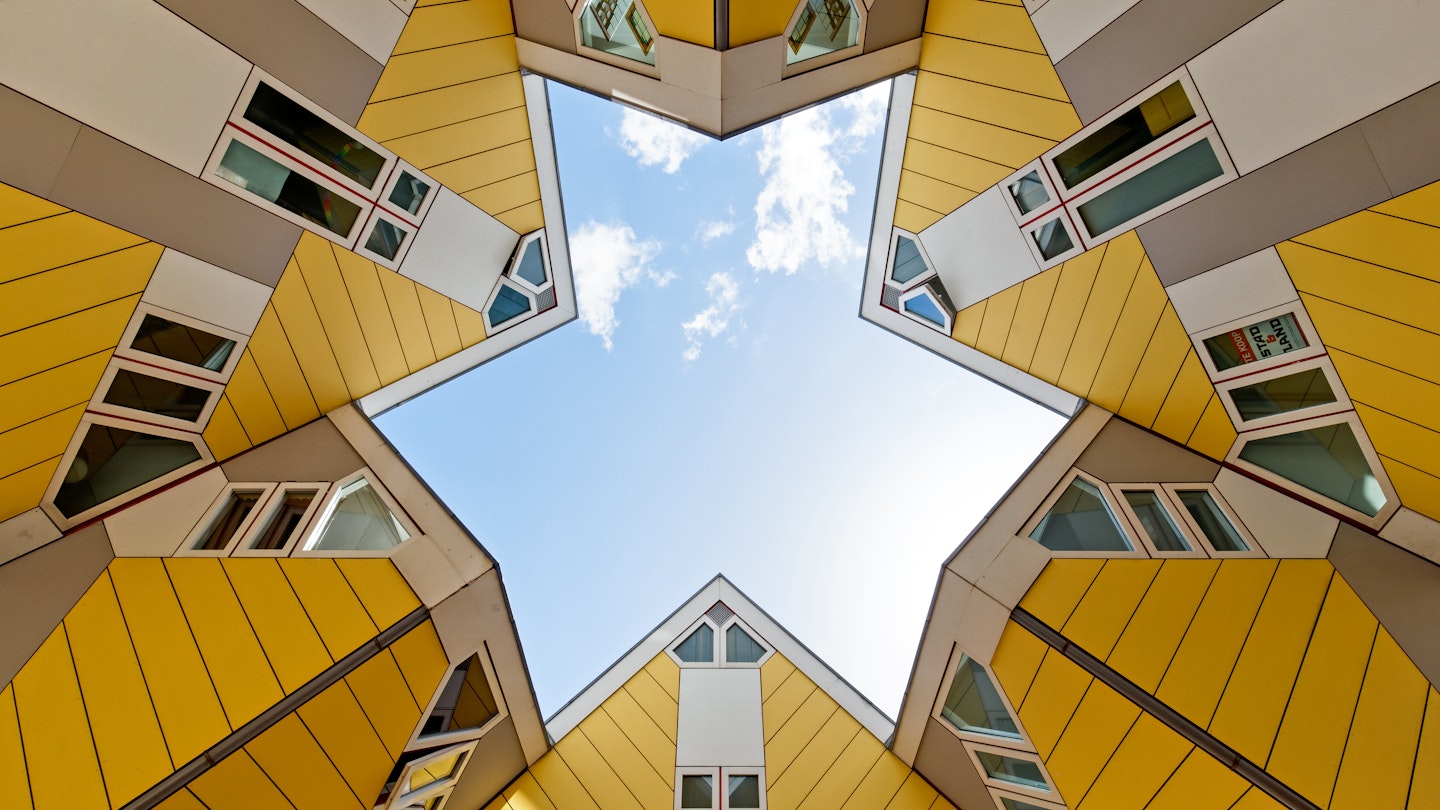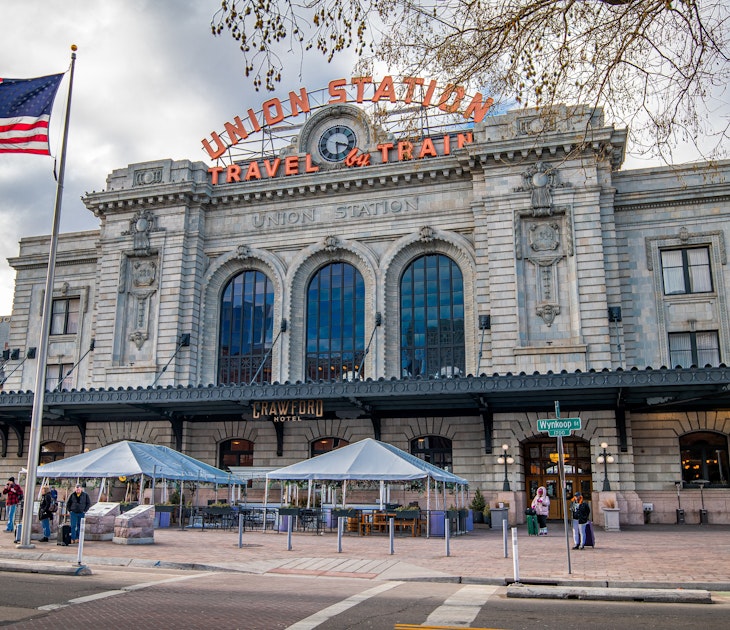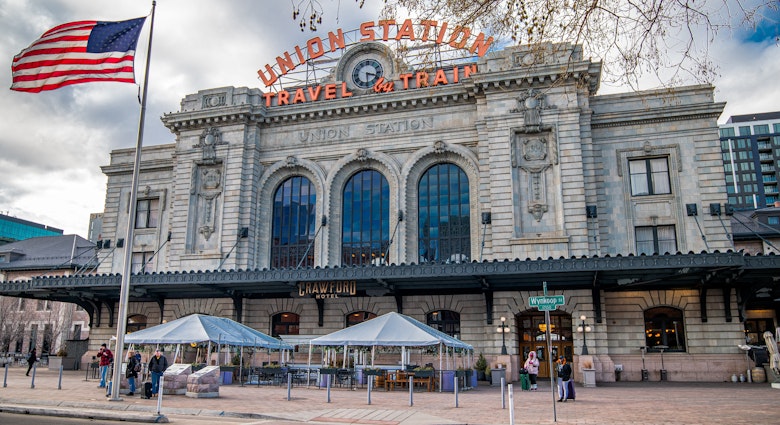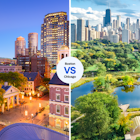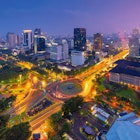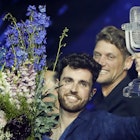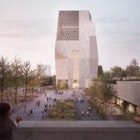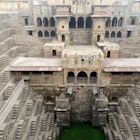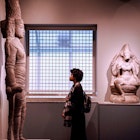In a land of crooked old houses and winsome waterways, Rotterdam is an anomaly; its audacious architecture and shapeshifting skyline stand in stark contrast to the traditional low-rise profile of other Dutch cities.
Rotterdam had a similar old-world aesthetic once, of course. To understand how it transformed into a modernist metropolis is to understand Rotterdam. This innovative and creative city is the Dutch master of reinvention — characteristics that will prove helpful as the world adapts to new challenges.
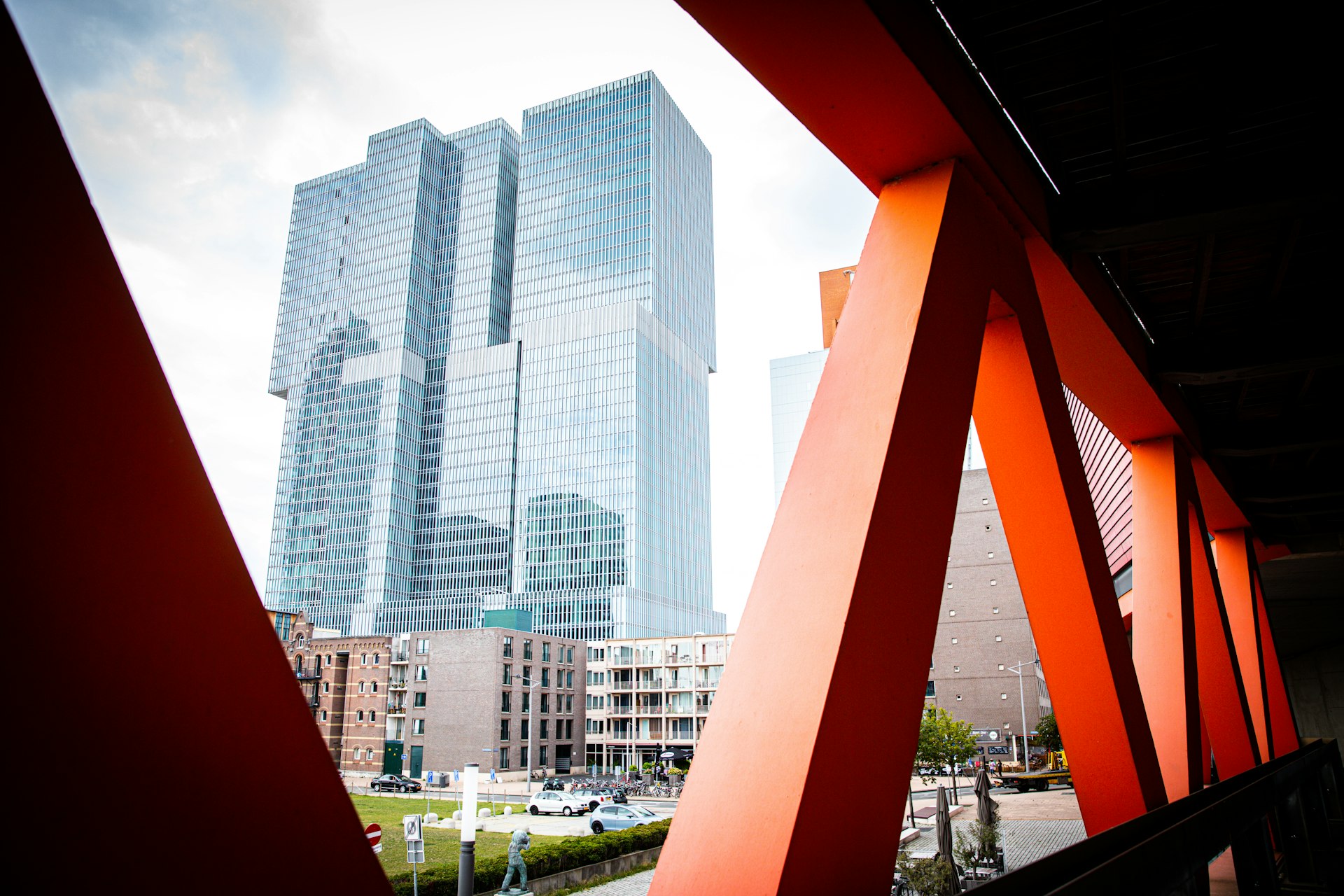
Much has been written about Rotterdam’s phoenix-like rise from the rubble after the Second World War. This rags to riches story that has enticed visitors for decades but less well-publicized is how urban planners already had designs on modernizing the city.
“What a lot of people don’t know is that even before the war, there were plans to get rid of a lot of the old buildings and start building a new city,” explains Ariane Nooteboom, founder of Inside Rotterdam Tours. “The bombing opened up those plans – we had a blank canvas.”
Liberated from the limitations of its old architecture, Rotterdam’s urban planners have followed the modernist dream with a convert’s zeal, looking to US cities like Chicago for inspiration. Giddily, they approved statement structures that have since become iconic. Landmarks like the Chicago-esque Euromast tower, the harp-shaped Erasmus Bridge, and the tourists’ favorite, the trippy Cube Houses, which trick the eyes into believing that residents live at 45-degree angles. Another example of making the old new is the Kop van Zuid district, where new skyscrapers, such as The Sax, mostly designed by famed architecture firms rise above historic warehouses.
To the delight of Instagrammers, this architectural tradition has continued. Witness the gleaming, angular vision of the future that is Rotterdam Centraal; the Timmerhuis office complex, which looks like it’s been lifted from a computer game; and the horseshoe-shaped Markthal, a food market and apartment block, where shoppers can peer into people’s homes while scoffing lunch. (In true Dutch fashion, few residents bother to draw the curtains — a testament to the openness of its people.)
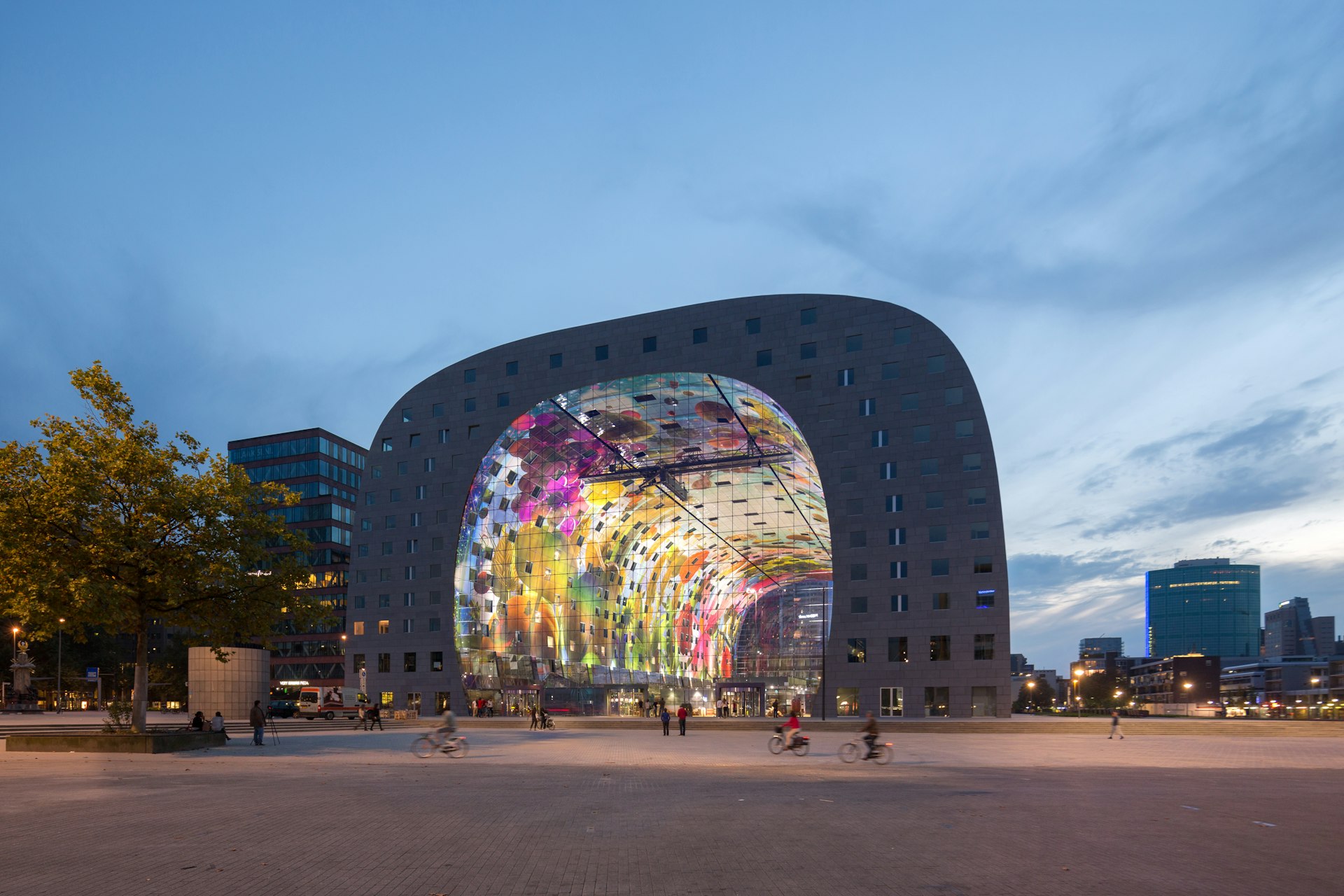
Early signs of Rotterdam’s lofty architectural ambitions can be traced back to one building, perhaps: Witte Huis. Located in the Maritime District, this decorative art nouveau office-turned-national-monument survived the blitz and was Europe’s first high-rise block when it opened in 1889. Nowadays, its ten stories barely trouble the city’s skyline.

Renegade art
Of course, Rotterdam’s rebirth was not without resistance, and in the shadows of its skyscrapers, a renegade artistic movement flourished. It, too, has left its mark on the city, adding another layer of intrigue for visitors. For one photogenic example, head to Poortstraat, where a red BMW appears to be crashing out of the side of an office block as if frozen in time.
It could be the set of an action movie, but the Hollywood-worthy scene is actually a commentary on Rotterdam’s rapacious post-war development. Kunst & Vaarwerk, the artist collective behind the installation, unveiled the work in 1987 in response to the city’s modernist agenda, which, to their chagrin, put cars at the heart of urban planning.
It was around that time that cracks started to appear in the modernist dream — not just in Rotterdam, but globally. “People started to reflect on what had happened in the post-war era and became dissatisfied with the way the modernization program had taken off,” says Paul van de Laar, an urban historian at Rotterdam’s Erasmus University. “There was a counter-reaction.”
From those cracks, new ideas flourished in Rotterdam. Boosted by its status as European Capital of Culture 2001, the city hatched a plan to become more livable by dedicating more of the public realm to people. One example of this is Nieuwe Binnenweg, a local hotspot for shopping and nightlife. The most well-known example, though, is the newly gentrified Witte de Withstraat, perhaps the best showcase for the so-called City Lounge program, lined with bars and restaurants that spill onto the tree-lined avenue.
“Ten years ago, it was a dodgy street,” said Nooteboom. “It has been turned into a going out street.”
The construction of the Luchtsingel — or “air canal’ — is another triumph of local ingenuity. The bright yellow pedestrian bridge has reconnected three districts severed from each other by road and rail. The walkway is said to be the world’s first crowdfunded public infrastructure project.
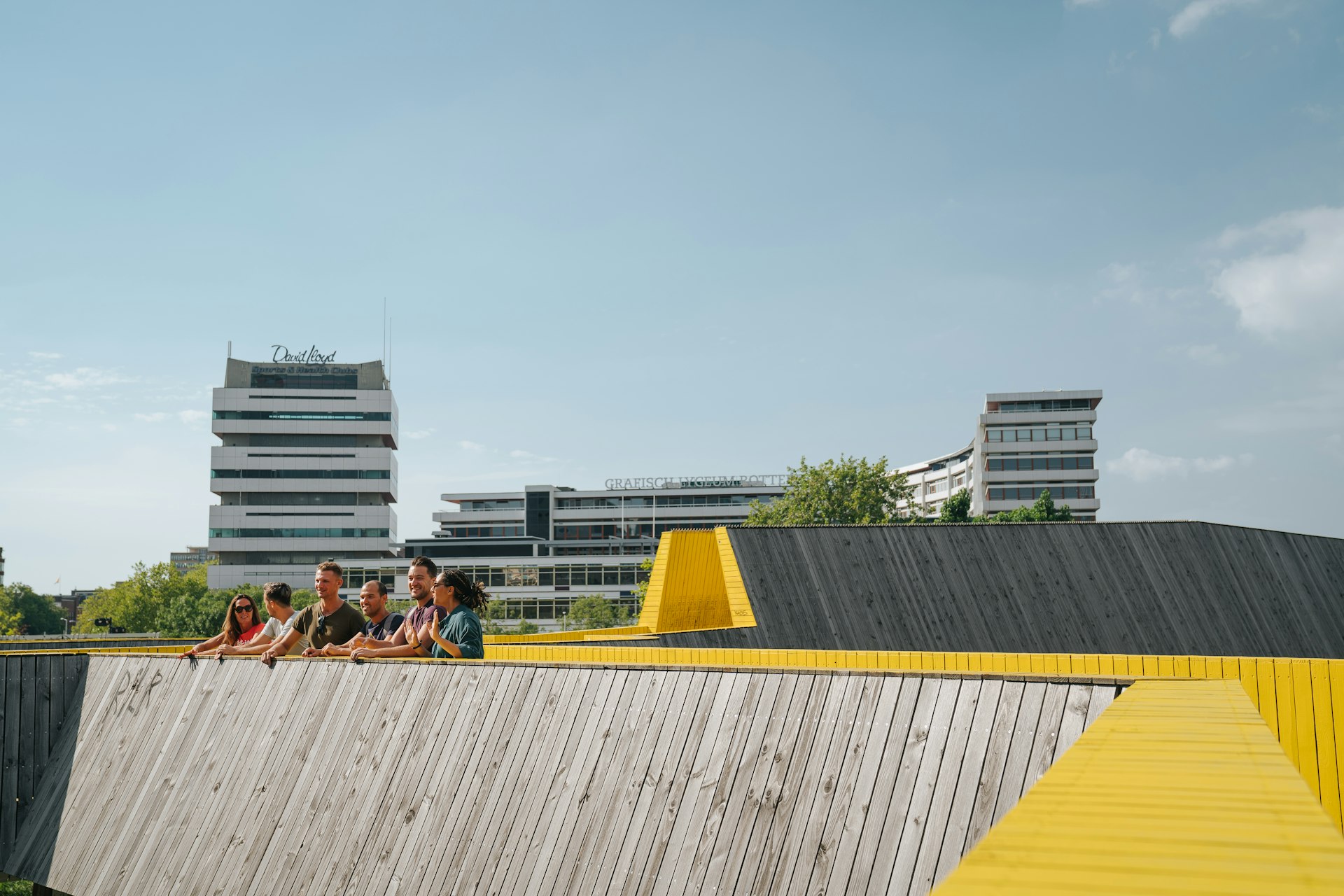
The museum experience is also being reinvented in Rotterdam. In November, the city will open Depot Boijmans Van Beuningen to the public. The vault contains 151,000 works of art accumulated by Museum Boijmans Van Beuningen over 170 years. It will be the first art storage facility in the world offering access to a museum’s complete collection.

Rotterdam 3.0
Rotterdam’s innovative character and (comparably) affordable rents have in recent years made the unthinkable happen: Amsterdammers moving to the second city, drawn in by Rotterdam's status as a frontrunner in circularity, sustainability, creativity and innovation. The can-do attitude of Rotterdam's locals has attracted attracted and inspired an influx from the capital and beyond.
Those new ideas have found fertile ground in an abandoned, leaky-roofed leisure center on the edge of the Nieuwe Maas river, where entrepreneurs are pushing the envelope in the field of sustainability. Formerly the Tropicana swimming pool complex, BlueCity is an incubator for change-making start-ups with a focus on the circular economy.

In workshops beneath the empty swimming pool, inventors can be found making imitation leather from rotten mangoes, growing mushrooms from used coffee, and creating bars of soap out of beer waste. Visitors are warmly welcomed- and can sample said ‘shrooms at Aloha, the on-site, low-waste restaurant that overlooks the river.
For another lesson in climate resilience, head to Rijnhaven port. There, Dutch engineers are building a carbon-neutral floating office complex complete with a swimming pool, opening in early September. At a time when many people are wondering what the future of work looks like, this place might hold some answers. Along with Rotterdam’s floating dairy farm — located further along the Maas — the building is ready for rising seas.
According to van de Laar, such projects are typical of Rotterdam, whose people are defined by the city’s reconstruction narrative. “Rotterdammers really believe they are able to make the future,” he says.
The Rotterdam we see today won’t be around for long. There are roughly half a dozen projects in the works right now, from city parks on railway viaducts high above the streets to green spaces along the river where locals can relax. In a world that’s rapidly changing, this stands the city in good stead.
